
Recently
a mixed, yet optimistic message came from a white
paper entitled “The Evolving Freight Forwarding
Market (2018).” The report, published
by LTI and based on just 50 responses to their
survey, reveals optimism among the forwarding
community in spite of technological change, e-commerce
challenges, and the new collaborative enterprise
pressure toward change.
Summer
2018 Signposts
Almost surprisingly,
forwarders are “expanding (or opening) fulfilment
facilities in key locations and combining these
with their airfreight forwarding expertise to
provide fast delivery services to customers.”
On the other hand, there is no shortage of literature
sentencing forwarders to rapid decline if they
are not ready to evolve into a new dimension of
logistics.
So we hear on one
side that Amazon, Alibaba, and others tend to
unconventionally invest in logistics, sending
shivers up the spine of logistics enterprises
in doing so, but we also see the expanding market
of the freight forwarders who are ready to act.
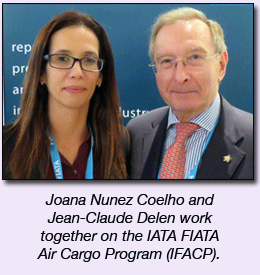 FIATA
IATA Cooperation FIATA
IATA Cooperation
This debate, albeit
not really new, happens precisely whilst FIATA
and IATA are trying to stay ahead of the curve
and experiment the roll-out of their new and ambitious
IATA FIATA Cargo Program, which promises to bring
air freight into the future landscape of trade.
What’s
In A Word?
The essence of airfreight
serving the international trade is the epitome
of what the term global means, and the cultural
intelligence necessary to implement any credible
program across 200-plus countries is a pre-requisite
to even start discussions. These are not easy
discussions: enormous interests are at stake.
Women and men patiently
involved in this effort are really testing the
depth of their diplomatic and business intelligence
in this awesome work.
People
That Matter
 A
sense of reverence surrounds their personalities. A
sense of reverence surrounds their personalities.
Readers of FlyingTypers
have learnt much about Joana Nunez Coelho, Rudi
Sagel, Keshav Tanna, Bill Gottlieb, and many others.
These are all exceptional personalities; there
is, however, another guy who can be rightfully
considered as the mastermind steering FIATA into
the agreement with IATA by managing and interpreting
the complex landscape of the FIATA Airfreight
Institute.
This person is Jean-Claude
Delen, who has been playing his cards shrewdly
within the AFI negotiating group and in other
areas of FIATA’s extended constituency vis-à-vis
the IATA positions.
The
Belgium Dynamo
If you have been
involved in logistics and airfreight in Belgium
in the last five decades, Jean-Claude is the person
you have probably heard about quite often.
It was my privilege
to come to know Jean-Claude years ago and spend
the second part of my career at the service of
the associations where he was firmly at the steering
wheel.
Today Jean-Claude
is the President of the FIATA Foundation for Vocational
Training in Zurich, after serving many years as
FIATA President and then FIATA Treasurer.
A
Lifetime of Leadership
 Jean-Claude is originally
from Liège, the Ardent City and heart of
the Belgian Ardennes; in his long and straightforward
career, Delen has collected a number of high-level
positions in logistics and transport, both in
his home land (25 years at the top of BAFI and
CEB) and abroad.
Jean-Claude is originally
from Liège, the Ardent City and heart of
the Belgian Ardennes; in his long and straightforward
career, Delen has collected a number of high-level
positions in logistics and transport, both in
his home land (25 years at the top of BAFI and
CEB) and abroad.
Heading CLECAT,
the EU-level representing body of freight forwarders
in Brussels when I was working there, he has been
a President for whom it was fun to work and in
that period good results came like rain.
His personality
can elicit a sense of envy in the young guy who
approaches our thriving, yet tumultuous sector.
The hindsight of
these extraordinary career achievements should
not confuse us, if we have a look at where all
this started in 1965 as a junior clerk helping
the morning clearance of the afternoon deliveries
coming by air to Brussels for Air Express International
(later to be acquired by Deutsch Post DHL). Having
reached the position of CEO Benelux and France
in DHL Global Forwarding, Jean-Claude held his
head high up in the air, but his foot was planted
on the gas of his rather eye-catching car.
Jean-Claude
Takes A Ride
Today JC’s
plate number is JCD 501, a feat in Brussels’
randomly chosen registrations. Delen drives an
exclusive Mercedes, as JCD has never made any
mysteries of his passion for fast cars.
Jean-Claude has
always been a restless worker. In those days it
was imports by day and shifts at night exporting
Caterpillars, a customer Jean-Claude carried with
him all the way through his long and extraordinary
career.
No wonder his president
was pleased with his work; no wonder, either,
that Jean-Claude knows what you are thinking ahead
of your own awareness.
Life
After DHL
When Jean-Claude
left DHL in 2014 he was immediately contacted
by the CEO of Brussels Airport and became his
Senior Advisor, yet still serving as the president
of the “Social Funds & Pension Transport
and Logistics,” a fund providing pensions
and welfare to some 64,000 workers in Belgium.
We shall stop at that, but we could continue
. . .
Self-Made
Man
Jean-Claude writes
himself as a “self-made man, easy approachable
in all circumstances by all level of employees.”
When you put this together with other qualities
(which he modestly keeps concealed behind thick
curtains) such as steely determination, decent
health, patience, anticipation, repartee and stamina,
and you have a first-class negotiator who managed
to pull the diverging ideas surrounding the airfreight
business together and, significantly, get two
heavyweight signatures on the last page of the
deal.
Runs
In The Family
With this kind of
pedigree, one might think that Jean-Claude works
24 hours a day and doesn’t have time for
a family.
Well, that would
be a mistake.
He runs a rather
comfortable life in the outskirts of Brussels
(where well-to-do Belgians actually live, the
center of Brussels being more attractive for expats
than Belgians) with his wife, Hélène,
a charming, intelligent lady who calls him from
time to time to inform him of small disasters
caused by his dogs. Jean-Claude is no longer young,
but you would not suspect his age if you met him,
and you should be especially wary of confronting
him on a golf course.
So the question
remains open: is Jean-Claude doing better as the
mastermind of logistics or as a golfer?
If you wish to discover
this you might test his own statement, which describes
him as easily approachable.
In order to do that,
you might have to become his employee, but that
would actually be quite a rewarding experience.
Marco Sorgetti
|
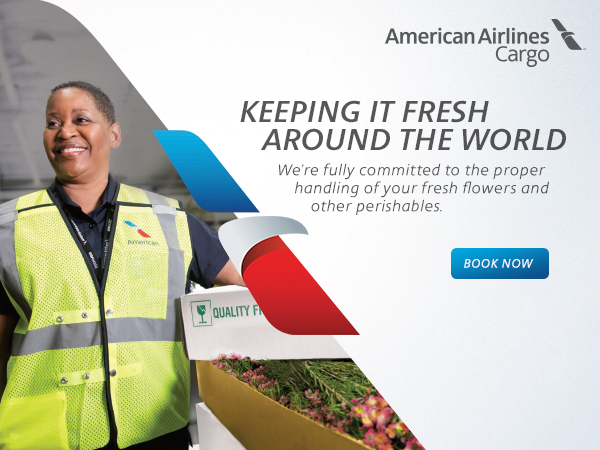



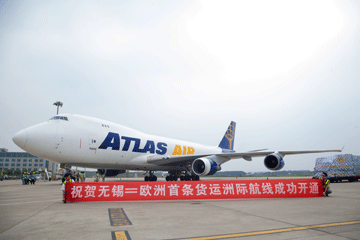
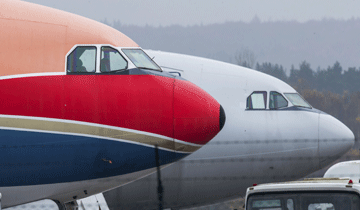


 Vol.
17 No. 37
Vol.
17 No. 37 Vol.
17 No. 38
Vol.
17 No. 38

 FIATA
IATA Cooperation
FIATA
IATA Cooperation A
sense of reverence surrounds their personalities.
A
sense of reverence surrounds their personalities.
 Jean-Claude is originally
from Liège, the Ardent City and heart of
the Belgian Ardennes; in his long and straightforward
career, Delen has collected a number of high-level
positions in logistics and transport, both in
his home land (25 years at the top of BAFI and
CEB) and abroad.
Jean-Claude is originally
from Liège, the Ardent City and heart of
the Belgian Ardennes; in his long and straightforward
career, Delen has collected a number of high-level
positions in logistics and transport, both in
his home land (25 years at the top of BAFI and
CEB) and abroad. 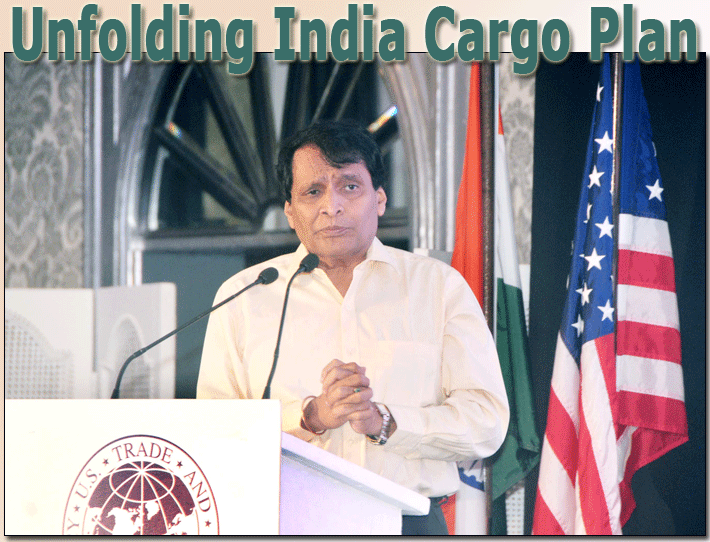
 The
Airports Authority of India (AAI) has put up already
21 common user domestic cargo terminals at its
airports. Significantly, measures are being taken
to reduce cargo release time to two days for air
imports and only one day for exports.
The
Airports Authority of India (AAI) has put up already
21 common user domestic cargo terminals at its
airports. Significantly, measures are being taken
to reduce cargo release time to two days for air
imports and only one day for exports.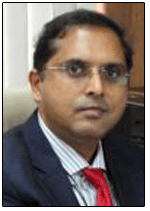 Celebi
Checks In
Celebi
Checks In The
Singh Song
The
Singh Song
 Air
Cargo News FlyingTypers reserves the right to edit all submissions
for length and content. All photos and written material submitted to
this publication become the property of All Cargo Media.
Air
Cargo News FlyingTypers reserves the right to edit all submissions
for length and content. All photos and written material submitted to
this publication become the property of All Cargo Media.